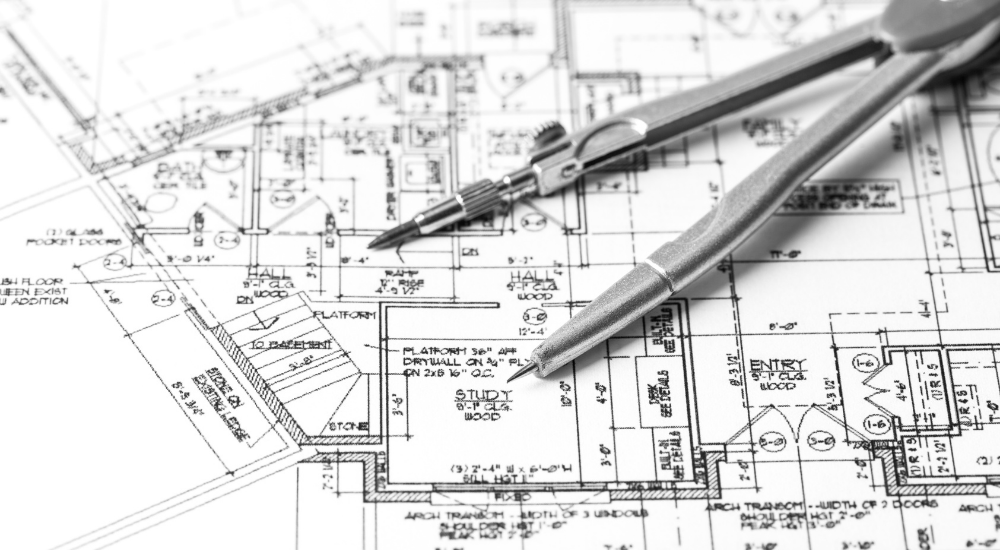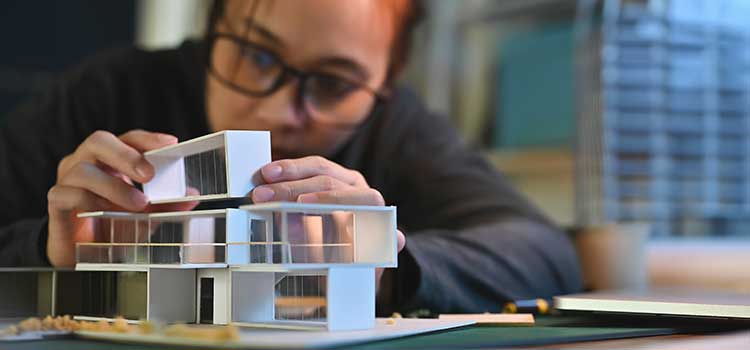Architect-Approved Home Renovation Ideas
Architect-Approved Home Renovation Ideas
Blog Article
Understanding the Diverse Career Paths Available for Aspiring Architect
As an aspiring Architect, you have a world of job paths waiting for you. Whether you're drawn to typical architecture or the nuances of sustainable style, there's a niche that aligns with your rate of interests.
Typical Style: Creating Structures and buildings
Standard design focuses on creating buildings and structures that blend functionality with aesthetic appeal. Your designs can reflect cultural heritage, showcasing neighborhood practices while fulfilling modern-day demands.
You'll create abilities in preparing, model-making, and site analysis, permitting you to envision and connect your concepts successfully. Involving with clients, you'll need to understand their vision and convert it right into feasible layouts.
Furthermore, developing codes and sustainability practices are vital in your work, guaranteeing your frameworks are risk-free and environmentally pleasant. As you expand in your occupation, you'll locate possibilities in household, industrial, or even reconstruction jobs, each offering distinct challenges. Welcoming conventional architecture leads the way for a meeting occupation that admires the past while forming the future.
Urban Planning: Forming Communities and Public Spaces
As an ambitious Architect, you can play an important role as a metropolitan planner, changing how areas communicate and operate. By utilizing area interaction approaches, you'll ensure that homeowners have a voice in shaping their setting. Plus, incorporating lasting design concepts will certainly help produce rooms that not only satisfy today's needs however additionally protect the future.
Function of Urban Planners
While many may consider architects as the sole enthusiasts behind structures, urban coordinators play a crucial role fit the more comprehensive landscape of communities and public areas. They assess land use, zoning regulations, and area needs to produce sustainable environments that boost top quality of life. By working together with numerous stakeholders, you'll aid design parks, transportation systems, and houses that advertise social communication and access. Urban coordinators also concentrate on ecological factors to consider, making certain that developments integrate green spaces and support biodiversity. Your expertise in spatial design and community dynamics allows you to envision future growth while preserving cultural heritage. In this important function, you'll directly influence how people experience their surroundings, making every project an opportunity for favorable adjustment.
Neighborhood Interaction Strategies
Efficient community interaction approaches are vital for metropolitan coordinators to guarantee that the voices of citizens are heard and valued in the planning procedure. To cultivate significant dialogue, you must prioritize open online forums and workshops where area participants can share their concepts and problems. By proactively paying attention and incorporating feedback, you'll create spaces that reflect the community's needs, ultimately leading to more lasting and effective city environments.
Lasting Style Principles
When developing urban rooms, integrating sustainable design concepts is vital for producing environments that thrive both environmentally and socially. Take into consideration incorporating eco-friendly rooms, like parks and yards, to boost biodiversity and boost air high quality.
Designing with water preservation in mind is likewise key-- assume about rain yards and permeable surface areas to handle stormwater. Involving neighborhood members throughout the planning procedure warranties that the areas you produce meet their needs and encourage social communication. By embracing these principles, you'll add to vivid, lasting city landscapes that benefit everybody.

Landscape Architecture: Creating Lasting Outside Environments
As you discover landscape design, you'll discover essential layout principles that create attractive and practical exterior spaces. Lasting methods play an important duty in making sure these environments grow while lessening environmental effect. Plus, you'll discover a variety of job possibilities that allow you to make an actual difference in just how people connect with nature.
Design Concepts in Landscape
Understanding layout principles in landscape design is essential for producing lasting outdoor settings that harmonize with nature. You'll need to ponder elements like equilibrium, range, and proportion to ensure your styles really feel cohesive and welcoming. Including native plants not only boosts biodiversity but likewise minimizes water usage, making your landscape resistant. Consider the flow of area and just how individuals interact with it; paths and seating areas must welcome expedition and leisure. Additionally, focus on seasonal modifications, making with products that enhance the surroundings year-round (Architect). By prioritizing sustainability and aesthetics, you can create outdoor spaces that enhance the neighborhood and promote wellness. Accepting these principles will set a strong foundation for your profession in landscape design.
Sustainable Practices Summary
Sustainable techniques in landscape architecture not only concentrate on appearances but likewise focus on eco-friendly health and resource preservation. You can make spaces that promote soil health and wellness, such as making use of organic materials and exercising permaculture concepts. Inevitably, these practices ensure your styles profit both individuals and the setting for years to come.
Career Opportunities Exploration
With a solid structure in lasting techniques, landscape design supplies a selection of career paths that permit you to make a purposeful influence on the atmosphere. You can function as a landscape developer, developing aesthetically pleasing and functional outdoor spaces, or specialize in ecological restoration, helping to revive damaged communities. Urban coordinators commonly team up with landscape engineers to develop eco-friendly areas in metropolitan settings, enhancing city livability. If you're enthusiastic concerning education and learning, think about ending up being a landscape architecture educator, inspiring future generations. In addition, you could deal with nonprofits concentrated on environmental sustainability or engage in study to introduce new practices. Each path not just shapes stunning atmospheres but additionally cultivates a healthier planet for future generations.
Sustainable Style: Concentrating On Eco-Friendly Practices
As you explore your career in design, welcoming green methods can establish you apart in a competitive field. Lasting style concentrates on developing structures that minimize environmental effect while enhancing occupant wellness. By incorporating sustainable products, energy-efficient systems, and sustainable building methods, you'll add to a greener future.
Start by getting knowledge of eco-friendly qualifications like LEED or BREEAM, which can bolster your credentials. Take into consideration how natural light, ventilation, and thermal effectiveness can maximize design. Collaborate with engineers and ecological professionals to innovate services that decrease waste and save sources.
Do not forget the significance of neighborhood participation-- appealing regional stakeholders can motivate styles that balance with the atmosphere. As customers increasingly prioritize sustainability, your expertise in environmentally friendly methods will certainly not just bring in jobs however likewise meet your interest for liable style. Welcome this crucial aspect of the profession, and watch your career flourish.
Historical Conservation: Protecting and Restoring Cultural Heritage
While you start on your building trip, take into consideration the crucial duty of historical conservation in preserving our cultural heritage. This field focuses on the defense and remediation of substantial structures, websites, and structures that inform the stories of our past. By taking part in historical preservation, you'll help secure the architectural legacy that shapes community identification.
As a historic conservation Architect, you'll assess historical significance and analyze the condition of structures. You'll function closely with preservationists and chroniclers to ensure authentic repair strategies are used. This job path allows you to blend imagination with research study, allowing you to design remedies that value original products and craftsmanship.
Your work not just contributes to sustainability by recycling existing structures however likewise cultivates a sense of pride within communities. Accepting this course will help you come to be a guardian of history, maintaining the stories and aesthetics that improve our lives.
Inside Style: Enhancing Indoor Spaces
Historic preservation and indoor style both share a commitment to improving the constructed environment, however they concentrate on different aspects. While historic conservation stresses maintaining a structure's social and historic value, indoor style zeroes in on enhancing interior rooms for functionality and aesthetics.
As a hopeful Architect, you'll locate that interior style allows you to blend imagination with technological skills. You'll make spaces that not just look good but likewise promote convenience and effectiveness. This area entails recognizing just how light, color, and materials interact within an area, impacting state of mind and usability.
You'll deal with various jobs, from property homes to business workplaces, guaranteeing that each atmosphere satisfies the requirements of its passengers. By focusing on individual experience, you can change interiors into practical and motivating spaces, making a considerable influence on exactly how people engage with their environments. Welcome the possibility to improve indoor environments and shape the means people work and live.
Industrial Style: Merging Performance With Looks
Industrial design plays a necessary role in creating items that seamlessly mix aesthetic appeals with capability, guaranteeing that what you make use of day-to-day is not only aesthetically enticing yet also sensible. As an ambitious Architect, you could involve yourself in this area, focusing on designing every little thing from furniture to customer electronics. Your job includes understanding customer needs, products, and producing procedures, allowing you to develop ingenious remedies that improve day-to-day experiences.
In industrial layout, you'll commonly collaborate with marketers, producers, and engineers, guaranteeing that your layouts are not only lovely yet also practical. You'll find out to balance type and feature, focusing on usability without giving up design. By developing your abilities in sketching, 3D modeling, and prototyping, you'll be well-appointed to bring your concepts to life. This career path provides a vibrant setting where imagination fulfills functionality, making it a fulfilling choice for architects curious about shaping the items of tomorrow.
Frequently Asked Inquiries
What Educational Certifications Do I Required to Come To Be a Designer?
To become an engineer, you'll require a professional degree in design, normally a Bachelor's or Master's. Additionally, you'll need to complete an internship and pass the Architect Registration Exam to exercise legally.
Exist Certification Requirements for Different Architectural Occupation Paths?
Yes, there're certification needs for different architectural paths. Architect. You'll require to pass examinations, full internships, and sometimes go after specialized training, depending upon your selected focus, like landscape design, city design, or historic preservation
What Software Program Skills Are Essential for Designers Today?

How Can I Gain Practical Experience While Researching Design?
You can gain sensible experience by interning at architectural companies, taking part in layout competitions, volunteering for neighborhood projects, or teaming up with classmates on real-world jobs. These opportunities boost your abilities and develop important links in click to find out more the industry.
What Task Opportunities Exist Outdoors Conventional Style Firms?
You can discover numerous work opportunities outside conventional design firms, like urban planning, interior layout, landscape architecture, building and construction administration, genuine estate growth, or even functions in sustainability consulting. Each deals one-of-a-kind obstacles and address rewards.
Whether you're drawn to typical architecture or the nuances of lasting style, there's a specific niche that straightens with your interests.When creating city rooms, incorporating lasting layout principles is vital for developing environments that flourish both ecologically and socially.As you explore landscape architecture, you'll find necessary layout concepts that create stunning and practical exterior spaces.Comprehending style principles in landscape design is necessary for developing lasting outside settings that balance with nature.In commercial style, you'll commonly team up with producers, engineers, and marketers, making description sure that your styles are not only beautiful but additionally practical.
Report this page